Front Garden
- Throughout the garden lawns consist of a diversity of plants - celandines, daisies, black meddick, various speedwells, sweet and white violets and grasses.
- A large clump of dense shrubs provides shelter and nesting for birds.
- One of seven wooden nest boxes is located high up in the front porch and is used by Great Tits.
- Two Woven Roosting baskets are both in use.
- A Ladybird refuge/tower offers shelter but the window frames of the house are preferred, mainly by the 'alien' Harlequin ladybirds.
- One of five water butts on site captures rainwater from the flat roof. In total 1,000 litres of rainwater can be stored.
Side Garden
- a recently acquired bamboo ‘straw’ housing estate for insects offers shelter to insects..
- A large unidentified large flowering shrub is covered in bees in late April and again in October by starlings and fieldfares harvesting the pink-red berries.
- The Herb bed specially offers late summer delights to bees, flies and butterflies – the marjoram flowers are much loved.
Back Garden
- There are two bird baths - one on the ground and one on a pedestal. Ducks visit in April and nest nearby.
- The Bird Table and bird feeders mainly cater for Dunnock, chaffinch, green finch, tit, robin, house sparrow and dove. Pheasant, Pigeons, Corvids, parakeet and even a Moorhen have fed from the table.
- Buried in the clematis is a Sparrow terrace box. Sparrows returned last year after a long absence.
- The neighbouring field has been set-aside, arable (wheat, linseed,) and currently sheep graze on it.
- Several bird boxes have been installed in the Leylandii and Beech hedges.
- The Buddleia is appreciated by various butterflies.
- Woven roosting baskets have been installed in the Beech hedge.
- Pyracantha houses a recycled lamp stand as a potential nest framework, and provides orange berries in the the autumn.
- The first of two home-built Hedgehog boxes. They will be inspected in summer to see if they have been used.
- The juniper tree is a good nesting site for chaffinches and green finches.
- Bee attractive plants in garden include Ceanothus, Thyme, Lavender, Hebe, Candytuft, Escallonia, Salvia, Pyracantha and Broom.
Garage
- An Insect straw ‘estate’ made of bamboo has been hung beneath the rafters.
- 4 wooden nesting boxes (some home made) hang under the eaves of the garage, two are in use this year.
- Birds can easily roost in garage.
- The Hazel nuts are popular with squirrel and mice.
- A wooden fence panel flat on ground has sheltered grass snake in the past.
- One of the bird boxes is home-made using 100-year old church oak shingles from the village church.
- Dead Elms are left standing as long as possible as popular perches for birds and to provide habitat for insects.
- The pink coloured Tit nesting box has been used every year since it was put up.
- 4 Water tanks are interconnected to harvest, distribute and store rainwater from the garage roof.
- Log pile – wood from dead elms down footpath.
- Twig pile – mainly apple cuttings.
- Within the tall grass are ant nests, much visited by the Green Woodpecker.
- The 2nd of the home-made hedgehog boxes.
Vegetable Garden
- The tall grass strip includes meadow cranesbill, cowslip, speedwell and various other wildflowers.
- The Vegetable garden has fencing to keep the rabbits out.
- Some of the paving in the patch is Recycled from a defunct neighbouring swimming pool.
- Organic vegetable garden – with pest management help from ladybirds, blackbirds and thrushes and marigolds.
- There is no snail or slug problem here because there are no cats to kill or scare away the slug and snail feeding birds on the ground.
- All vegetables are grown organically on home-produced compost/soil without any artificial fertiliser and obviously no pesticides or herbicides. We rarely have any plant diseases anywhere in the garden.
- All plant watering is with watering can drawing from the water butt linked to the upper water butt system..
- Soil is supplemented each winter with 2-year old compost from the compost heaps made of garden surplus..
Down the Meadow
- There are 4 Compost heaps – Straw/grass, This Year, Last Year and Leaf Mould.
- More about the meadow grasses and management of the meadow which is part rotation cut once in August each year. The Meadow grass cutting plan is to (a) rotate area to be managed - about 50% of the grass is cut in rotation each year (b) rotate the method of management using Mow - Hay - Rest in subsequent years.
- We usually do one or two Moth surveys a year and have had 125 species here including Emeralds, Elephant Hawk Moths and Poplar Hawk Moths.
- Corn cockles (rare in the wild) have been sown and flourished in 2010.
- The Mixed hedge planted 1995 includes Field Maple, Hazel, Hawthorn, Black Thorn, Guelder Rose, Dogrose and Crab apple.
- The Hedgerow accommodates about 10 birds nests a year. We think a White Throat is one of the nesters this year.
- Carpet pieces in middle of meadow shelter grass snakes, voles and others.
- We leave the wild roses uncut to provide hips for bird food in winter.
- Large neighbouring Field – firstly set-aside, then arable, now sheep.
- Lapwing, Skylark, Red Kite have all been seen in that field.
- We have seen adder, slow worm and grass snake in these grasses.
- The Oak and Beech trees were planted in 1995.
- The Crab Apple trees are a welcome harvest for birds in the autumn..
- The Gate opens onto the Wooded Way which goes down 400 yards – which I mow and manage.
- We have lovely mature oaks and standing dead wood nearby in the golf course.
Back up the Meadow
- The Wildlife Heap originally recommended to us by FWAG now shelters unknown numbers of species.
- We have never had a bonfire since out arrival in 1995.
- The Nettles here usually support Peacock butterfly caterpillars.
- A dead tree trunk is left standing to host fungi and various beetles and insects.
- The Laid hedge includes oaks, ash and maples and was laid by the 1993 Hedge-laying champion, Peter Trunks.
- Wildflowers include: Yellow Vetch, Meadow Vetchling, Common Vetch, Hairy Tare, Smooth Tare, Birds Foot trefoil.
- Butterflies include: Skippers, Common blue, Meadow brown, Specked wood, Comma, Tortoiseshell, Peacock .
- We have plans for a largish pond in the meadow, about 20 x 7 metres.
- Hazel Hurdles were made from self-harvested coppiced hazel from down the footpath and erected to fence the small gaps.
- Apple Trees, newly planted pear and plum trees, poppies, cranesbill feature here.
- The Insect Hotel features Beetle banks and insect shelter in wood, tiles, bricks and rubble. A Bumblebee nest pot to an Internet sourced design has not worked and will be revised this year. The area offers rotting wood, shelters and refuges.
Wildflower Lot & Orchard
- A Mini Pond with masses of tiny creatures and some reeds offers some temporary water life until the big bond is ready. The Azure Damselfly is common here.
- There are 25 - 30 species of Wildflowers in this area which was started about 7 years ago.
- Wildflower lot management means close mowing and raking in January. The addition of yellow rattle suppresses grass allowing space for itself and other wildflowers to thrive. The technique is being extended to the eastern end of the meadow.
- The tall Fir Tree is an important bird habitat, roost and shelter, especially against winter winds and snow so will not be removed..
- All plants in the garden are Rabbit proof plants, or they would not be here..
- Another ant nest in lawn is one of several enjoyed by woodpeckers.
- Apple, Pear and Plum trees bring lots of food through the autumn and winter. The lawn is left uncut beneath apple trees to provide a soft drop zone. Apples remain for birds to eat in Winter or to compost, along with the autumn leaves, into the soil.
- We have Wild plum trees in this 'tree hedgerow'.
- I also manage 400 yards of the Public Footpath which runs adjacent and away from the garden.
- A database of wildlife species found in the garden has been created over 16 years and has recently been extended to cover species found in other parts of the village.
In summary
- the whole garden is organic, free of pesticides, herbicides and artificial fertilisers, yet we have no significant plant disease at all. We raise and tend plants on natural seasonal cycles.
- while we may add some artificial habitats to assist wildlife the main component we provide is wholly natural toxin-free soil which promotes healthy plants, insects and a healthy food chain.
- We have kept records of wildlife species in the garden since 1996 and out databases now lists the 440 of trees, shrubs, birds, bees, moths, butterflies, mammals and wildflowers we have been identified in the garden since then.
- We like to think these species live or visit because the environment is so naturally healthy for them and hope you will agree and take some inspiration away with you to garden naturally.
That's the end of the tour....
|
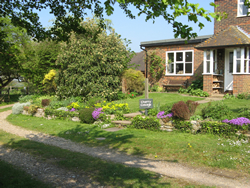

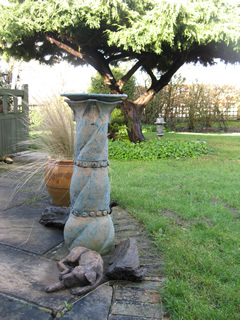
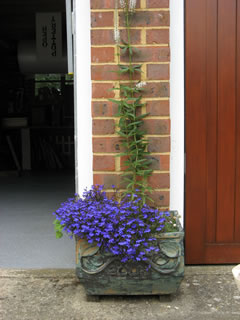
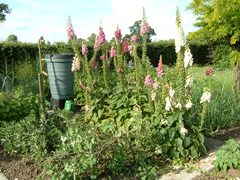
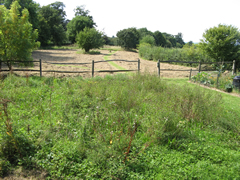
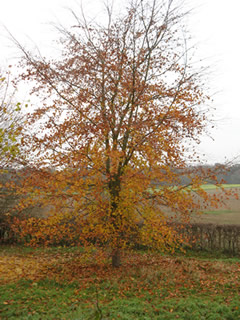


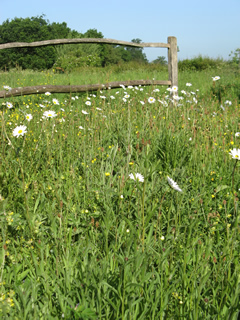 |



















